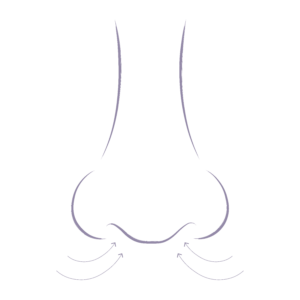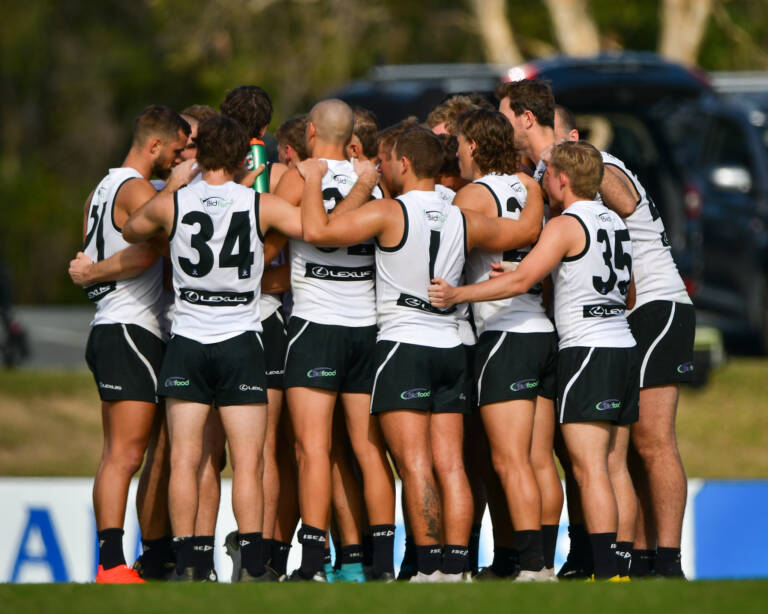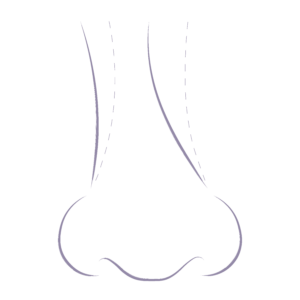A broken nose, or nasal fracture, is a common injury. It can happen from facial trauma, like contact sports injuries, fights, falls, or car accidents. When your nose’s bones or cartilage get cracked, it can cause many symptoms and problems, including complications like nasal septal hematoma and deviated septum. A nose fracture can lead to a collection of blood that necessitates emergency treatment and can displace the nasal septum, potentially requiring surgical intervention. Broken nose surgery like a Rhinoplasty or Septoplasty can help.
It’s important to know the causes, signs, and treatment for a broken nose. This will help your nose heal properly and look and function properly again.
Nasal fractures can damage the nasal bones or the nasal septum. The injury’s impact and force decide how much damage there is and what treatment you need. Getting medical help quickly is key to avoid serious issues and get your nose back to normal.
Results and expectations
Broken nose surgery, or nasal fracture repair, can greatly improve your nose’s function and look. Reconstructive surgery may be necessary to address severe nasal injuries and deformities resulting from broken noses. The main aim is to fix your nose’s alignment and structure. This can make breathing easier and improve your nose’s overall health.
➔ improved nasal function
If your broken nose has led to problems like a deviated septum, surgery can help. In cases of a severely broken nose, surgical intervention may be necessary to address severe breaks or complications such as nasal obstruction. It realigns the bones and cartilage, enhancing airflow. This can also reduce breathing troubles caused by the injury.

➔ cosmetic results
The surgery also boosts your nose’s appearance. It works to restore your nose’s natural shape and balance. This can make your nose look more even and pleasing.
The outcome of the surgery varies based on the injury’s severity and your nose’s unique features. Yet, a skilled plastic surgeon can still offer notable improvements in both nasal function and cosmetic results.
Causes of a broken nose
A broken nose is a common injury in Australia. It can happen for many reasons. Contact sports, fights, falls, and car accidents are the main causes. Any forceful hit to the nose can break it.
Sports like Australian rules Football, soccer, rugby and combat sports often lead to nose injuries. Falls and other accidents where the head hits something hard, can break the nose too.

Car accidents are another common reason. Whether driving, riding, or walking, a sudden hit can hurt the nose. This can happen when the nose hits the steering wheel or dashboard.
Even small incidents, like bumping into something, can break the nose. It’s important to see a doctor right away if you think you’ve broken your nose.
Symptoms of a broken nose
If you’ve had a nasal injury, knowing the symptoms of a broken nose is key. Recognising specific symptoms of a nasal bone fracture may indicate the need for urgent medical attention. These signs can be disruptive and worrying, needing quick medical help. Look out for sharp pain, swelling, a crooked nose, and breathing trouble. Spotting these symptoms early can help you get the right treatment and avoid worse problems.
Pain or tenderness in the nose is a clear sign of a break. The nose might swell, with bruises around it. If the nose looks crooked, it could mean a serious fracture.

Having trouble breathing through your nose is another symptom. Swelling and bone shifts can block airflow. You might also see nasal discharge, like blood or mucus, and nosebleeds that keep coming back.
- Pain or tenderness, especially when touching the nose
- Swelling of the nose and surrounding areas
- Bruising around the nose and eyes
- Crooked or misshapen appearance of the nose
- Difficulty breathing through the nose
- Nasal discharge, including blood or mucus
- Recurring nosebleeds
Some symptoms show up right away, while others take a few days to appear. It’s vital to see a doctor quickly. A badly broken nose needs fast treatment to heal right and avoid complications.
Diagnosing a fractured nose
If you think you have a broken nose, it’s important to see a doctor. This is especially true if you also have a head or neck injury, severe bleeding, trouble breathing, or if your nose looks different. Your doctor will start by doing a detailed physical check-up.
➔ when to see a doctor
After a nose injury, you should visit a doctor if:
- You’ve had a head or neck injury, which might mean more serious damage.
- There’s severe bleeding from your nose that doesn’t stop in 10-15 minutes.
- You’re having trouble breathing because of the injury.
- You see a clear change in your nose’s shape or position.

➔ the diagnosis process
Your doctor will carefully press on your nose and look inside your nasal passage. While X-rays are not usually needed, they might do a CT scan for serious injuries or if they think there are other facial fractures. The aim is to figure out how bad the nasal fracture is and plan the right treatment.
Getting medical help quickly and having a detailed check-up helps make sure your broken nose is looked after properly. This leads to a better recovery and helps your nose work better.
Nasal bones surgery
If your nose is broken, your doctor might suggest surgery to fix it. This surgery, known as rhinoplasty, or septorhinoplasty, aims to align your nose’s bones and cartilage.
➔ types of nasal bones surgery
The surgery type depends on how bad your nasal fracture is. For minor cases, a closed reduction might be done. This involves the doctor using special tools to adjust the bones and cartilage.
For more serious fractures or if you waited too long to get help, you might need rhinoplasty or septorhinoplasty. These surgeries are done under general anaesthesia and are usually day surgeries.
➔ the nasal bones surgery procedure
Nasal bones surgery is usually done as a day surgery under general anaesthesia. The doctor makes small cuts inside your nose to reach the bones and cartilage. They then reshape these to fix your nose’s shape and function.
After surgery, you might feel swollen, bruised, and sore. But, these symptoms can be managed with pain meds and rest. Your doctor will give you detailed instructions for a smooth recovery.
Recovery from nasal fracture surgery
After surgery for a broken nose, patients face a long recovery. The first few days are filled with swelling, bruising, pain, and breathing trouble. These are normal side effects of the surgery.

➔ immediate recovery
In the days after surgery, swelling and bruising around the nose and eyes are common. You might also feel pain, bleed, and have trouble breathing. Your doctor will give you pain meds and antibiotics to help.
They might also pack your nose with gauze to stop bleeding. For 1-2 weeks, you should avoid hard work and exercise.
➔ long-term recovery
The first few weeks are tough, but the long-term outlook is good. If the swelling subsides after 3 days, the nose may return to normal within a few weeks, provided there are no severe issues involved. Over months, swelling and bruising will go down. You’ll see the final look of the surgery.
But, be patient and let your nose heal fully. It takes time.
➔ risks and complications
Like any surgery, there are risks with nasal fracture surgery. These include infection, ongoing nasal blockage, and not liking the look of your nose. This might need more surgery.
It’s crucial to follow your doctor’s advice and go to all follow-up visits. This helps avoid these problems.
Does health insurance cover broken nose surgery?
If you’ve broken your nose, you might wonder if your health insurance will help with the surgery costs. The answer depends on your situation and your insurance plan.
Usually, if your broken nose affects breathing or is medically necessary, Medicare can cover the surgery. This is because it’s medically necessary to fix your nose’s function.
But, if you want the surgery just to look better, insurance might not help. In these cases, you might have to pay for everything yourself.
To know what your insurance covers, talk to your provider. They can tell you about your surgery’s coverage and any costs you might face.
Several things can affect if insurance covers your broken nose surgery:
- The severity and cause of your nasal fracture
- Whether the surgery is deemed medically necessary to address functional issues
- Your insurance plan’s specific policies and exclusions related to cosmetic or elective procedures
- Your deductible, co-payments, and any applicable limits on coverage
Understanding your insurance can help you make better choices about your treatment. This way, you can get the coverage you deserve for your broken nose surgery.
Book a consultation with a specialist plastic surgeon
If you’re experiencing symptoms of a broken nose, such as pain, swelling, and difficulty breathing, it’s essential to seek medical attention from a specialist plastic surgeon. A broken nose consultation with a specialist plastic surgeon can help determine the best course of treatment for your specific condition and anatomy.
During the consultation, the surgeon will evaluate the extent of the damage and discuss the available treatment options with you. They will also answer any questions you may have and provide guidance on what to expect during the recovery process.
To book a consultation with a broken nose specialist plastic surgeon, you can:
- Contact me clinic directly to schedule an appointment at 03 9569 3511
- Fill out our online contact form to request a consultation
- Ask your primary care physician for a referral to a specialist plastic surgeon
It’s crucial to seek medical attention promptly if you’ve experienced a nose injury or facial trauma, as delaying treatment can lead to further complications, such as a misshapen nose or difficulty breathing.
A specialist plastic surgeon can provide you with personalized care and attention to ensure that your broken nose is treated effectively, and you can regain your confidence and normal breathing function.
Don’t hesitate to reach out to us to schedule a consultation with a broken nose specialist plastic surgeon. We’re here to help you get the treatment you need to recover from your nasal fracture and achieve optimal results.
FAQs about broken nose surgery
What is a broken nose?
A broken nose, or nasal fracture, occurs when the bone and/or cartilage in the nose is cracked, often at the bridge or septum.
What are the common causes of a broken nose?
Blunt force trauma from sports, falls, fights, or accidents commonly causes a broken nose.
What are the symptoms of a broken nose?
Symptoms include pain, swelling, bruising, a crooked nose, difficulty breathing, and nosebleeds.
When should I seek medical attention for a broken nose?
Seek medical help if you suspect a broken nose, especially if there’s severe bleeding, breathing difficulty, or visible deformity.
What are the treatment options for a broken nose?
Treatment may involve a closed reduction or surgery like rhinoplasty, depending on the severity of the fracture.
What can I expect during the recovery from nasal fracture surgery?
Swelling, bruising, and discomfort are common after surgery, with full healing taking several months.
Does insurance cover broken nose surgery?
Insurance may cover surgery if breathing is affected, but cosmetic corrections may not be covered.
How can I book a consultation with a specialist plastic surgeon for broken nose surgery?
You can book a consultation with Me Clinic’s specialist plastic surgeons for an assessment and treatment plan.
Can I have a broken nose and not know about it?
Yes, mild fractures can go unnoticed if there are minimal symptoms or no significant nose deformity.
Can I get broken nose surgery if I’ve had previous nose surgery?
Yes, revision surgery can be performed to address a new fracture after previous nose surgery.
What are the risks of not treating a broken nose?
Untreated fractures can lead to breathing problems, chronic pain, or a permanently misshapen nose.
Can a broken nose affect my breathing?
Yes, a broken nose can block nasal passages, leading to breathing difficulties.
Further reading about broken nose surgery
- Visit the Me Clinic Nose Surgery page
- Visit the Rhinoplasty procedure page
- Visit the Septoplasty procedure page


